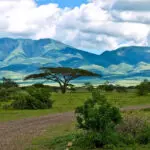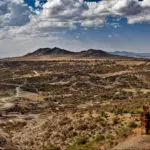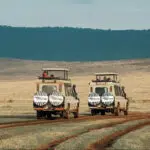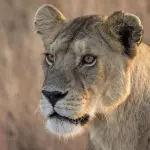Planning your first African safari can be daunting, particularly when considering a luxury or private journey in a country as expansive and diverse as Tanzania. With so many questions about the best time to travel, the ideal destinations, budgeting and finding reliable partners, it’s easy to feel overwhelmed.
However, the good news is that with some early planning and the right local connections, you can transform that anxiety into excitement. Here’s a helpful step-by-step guide to steer you through the process of planning your dream Tanzanian safari—from the initial spark of inspiration all the way to your departure day.
(To begin prepping for your own trip, be sure to browse our Tanzania Safari Tours.)
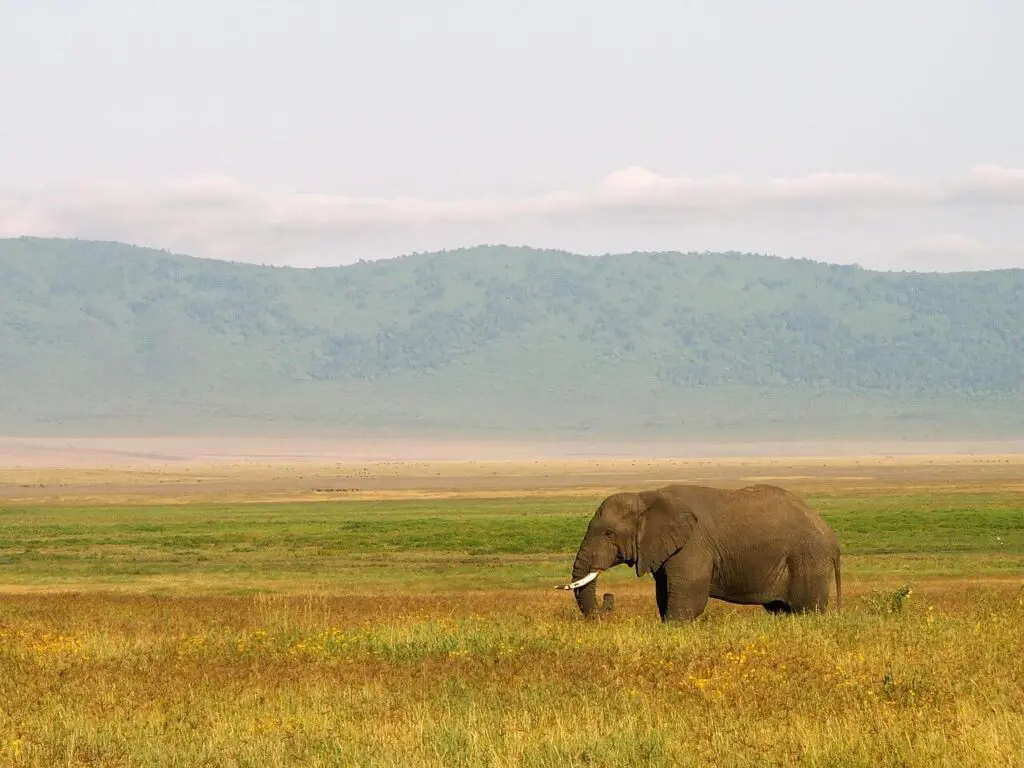
Choose the Best Time to Travel For You
Tanzania is a year-round safari destination, but wildlife viewing and costs vary depending on the season. The dry season, from June through October, is the most popular time: it features minimal rain, excellent wildlife sightings (including the Great Migration’s river crossings) and comfortable weather. However, it coincides with the Northern hemisphere’s summer holidays, making it the peak season—parks are busy and lodges charge premium rates.
The rainy season, specifically from April to May, sees fewer visitors, with some lodges even closing. While muddy roads can make some game drives more tricky, the landscapes are lush, birdlife is abundant and high-end camps offer significant discounts. You can experience safari exclusivity, often being the only guests at a lodge and game driving without another vehicle in sight.
Shoulder seasons also have their perks. November’s short rains and the December to March window offer great game viewing with fewer crowds and again, reduce prices. In January and February, wildebeest calving in the southern region of the Serengeti is a highlight.
Bottom line: Travel at the time that is right for you! This is your trip! There are pros and cons with every time of year, but ultimately, this is about you arranging your dream trip. If you have any questions about travel times, reach out to us.
Narrow Down Where to Go (Don’t Try to See All of Africa at Once!)
It’s tempting to “do it all” — Serengeti and Victoria Falls or Tanzania and South Africa — but first-time safari-goers are almost always happier focusing on one country or region. As seasoned safari planners say, go for quality over quantity. Tanzania alone is vast (the size of Texas or four times the UK), with enough variety to fill an entire trip.
For a first safari, the Northern Circuit is ideal — combining the Serengeti, Ngorongoro Crater, Tarangire and Lake Manyara. These iconic parks offer rich wildlife and scenery in a relatively compact area, meaning less time in transit and more time on safari.
Trying to cover too much in a relatively limited period,often leads to rushed travel, long drives and limited immersion. Even within Tanzania, it’s wise to pick one primary region. With only a week, focus on either the north (most popular) or the south (more remote), not both. Although our Safari Tours are all customizable, exploring our Safari Itineraries provides an excellent overview of what to expect.
Bottom line: For your first safari, choose Tanzania, and then select one specific region. You can always return later for southern parks like Ruaha and Nyerere — or to combine with Kenya — once you’ve caught the safari bug!
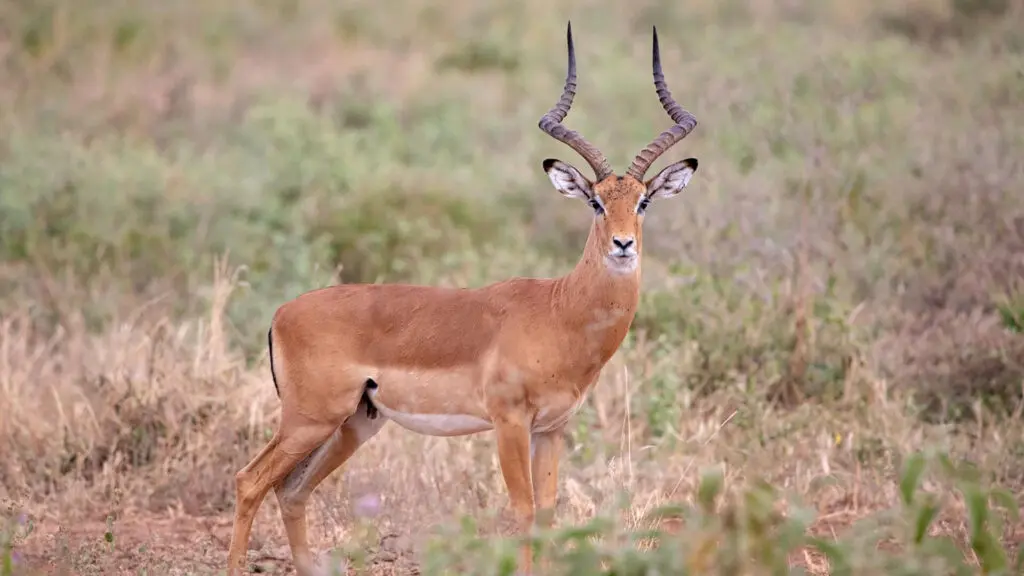
Set Your Safari Expectations: Duration, Pace and Style
Once you’ve picked your dates and destination, it’s time to plan how long to go and what kind of safari experience you are seeking. For a first-time visitor to Tanzania, 7-10 days on safari is the sweet spot (excluding beach time). That’s enough to visit 2-4 parks in Northern Tanzania, such as Tarangire, Ngorongoro and Serengeti, without rushing. A week gives you a real chance to spot the Big Five and still keeps each day exciting. If you have more time and budget, two weeks allow for a deeper dive, with space for cultural visits and other activities, or a few relaxing days in Zanzibar..
Don’t try to pack in too much. Tanzania is vast, and getting between parks often takes half a day or more. Dropping one destination to spend quality time in others usually makes for a better experience.
Safari days follow a natural rhythm: early starts, morning game drives when wildlife is most active, midday rest at the lodge, and afternoon drives leading into sunset. Evenings are for unwinding around the fire or enjoying a leisurely dinner. To truly enjoy this flow, aim for at least 2 nights in each location, and a minimum of 3-4 nights total in larger parks like the Serengeti. One-night stops are tiring and cut into your game-viewing time.
Consider your travel style, and share it with your safari operator. Do you prefer luxury lodges or remote tented camps? Want to fly between parks to save time, or drive and enjoy the countryside? There’s no right or wrong – it’s about matching your preferences. Since you’re likely booking a private safari, you’ll have your own guide and vehicle, allowing maximum flexibility. You can linger at a leopard sighting or shift your schedule within park rules. Not a morning person? Let your guide know and plan a slower start now and then.
Finally, set realistic expectations. Safaris can be thrilling but also tiring – early mornings, long drives and sensory overload. Build in downtime where needed: maybe a night in Arusha to recover from jet lag or a free afternoon to relax by the pool. A well-paced trip is almost always the most memorable.
Understand Safari Costs and Set a Realistic Budget
A private safari in Tanzania is a significant investment – often a “once-in-a-lifetime” trip – and the price reflects the logistics, expertise and all-inclusive nature of the experience. To avoid sticker shock, it helps to know the ballpark:
- Basic: ~$600 per person/day
- Mid-range: ~$850 per person/day
- Luxury: $1,200+ per person/day
For example, a 7-day luxury private safari for two can easily run $8,000-$10,000, excluding international flights. Prices are discounted for larger groups (4 or more).
Why the high cost? Your safari typically includes a 4×4 vehicle and licensed guide, national park fees (often $60 or more per person per day), accommodations, meals and drinks, and often internal flights or transfers. These trips are complex and all-inclusive, covering everything from guide salaries to vehicle maintenance and permits.
Season matters. High season means higher rates — some lodges charge double in July compared to May. If you’re flexible, shoulder or low-season safaris can save you thousands, with the trade-offs being wetter weather and sometimes more dispersed wildlife.
Also, budget for extras not typically included:
- International airfare: $800–$2,000 per person
- Travel insurance, entry visas and vaccinations
- Tipping: ~$20-40 per guest/day for guides and accommodation staff
- Souvenirs and optional activities
The key is to decide your budget early and communicate it with your tour operator. A good operator will guide you, suggesting the right mix of lodges, locations and more to fit your specifications. Some travelers choose to shorten the trip rather than cut corners on accommodations or guiding, since those factors heavily shape your experience.
Bottom line: don’t aim for “cheap,” aim for good value. And remember that every traveler has a unique budget. When it’s time to set off on your trip to Tanzania, organize a customized journey. At Pristine Trails, all of our tours are tailored to the needs of the traveler. To find out more, please contact us.
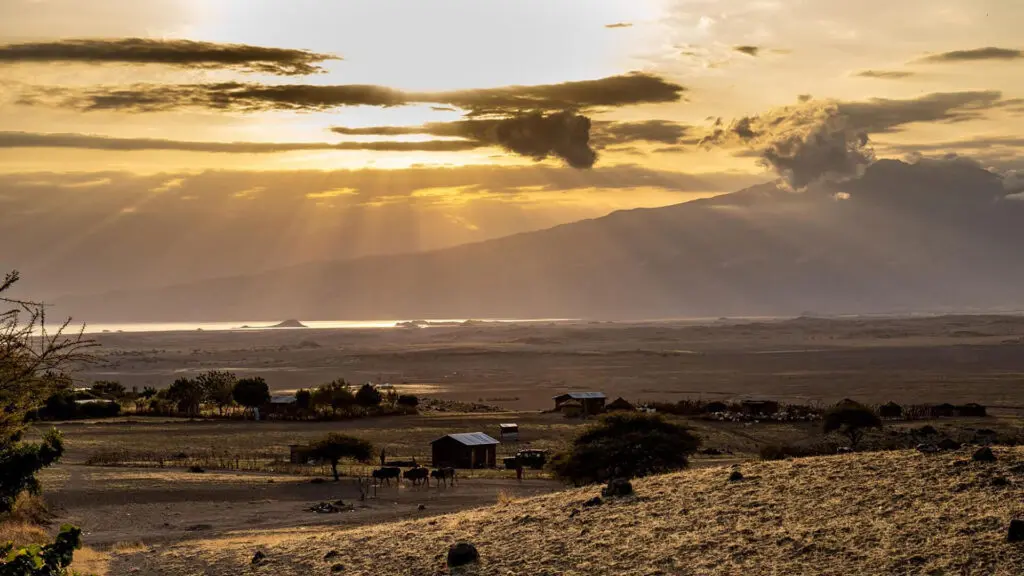
Work with a Reputable Local Operator (Early in the Process!)
One of the smartest ways to avoid safari-planning overwhelm is to partner with a reliable local safari operator. DIY-ing a trip might sound appealing, but it quickly becomes a full-time job—navigating hundreds of camps, park logistics and permit rules is no small feat. As one safari planner put it, “Setting up a good safari is a steep learning curve, especially if it’s your first time in Africa.”
Local Tanzanian operators make a living by planning safaris. They know the parks inside out, have teams on the ground and often get better rates than you’d find on your own. Hiring a trusted operator early can save you hours of confusion and deliver a custom itinerary that matches your interests—whether that’s photographing lions, visiting a Maasai village or enjoying sundowners with a view.
To find the right operator, do a bit of vetting:
- Look for licensed Tanzanian companies; TATO or TALA credentials are a good sign (Pristine Trails has TALA licenses for both our Tanzania Safaris and Kilimanjaro Trekking Tours.)
- Check reviews on user-generated platforms like Google Business Profile or TripAdvisor —look for consistent praise on guides, service,and reliability. Read Pristine Trails’ Reviews.
- Ask for a clear breakdown of what’s included in the price, such as park fees, transport and accommodation.
- Contact companies for quotes and communication. How responsive are they? Do they tailor the itinerary to your preferences or push a generic package? Schedule phone calls, especially at the beginning scouting stage, to get a real sense of who you would be booking with. You can contact Pristine Trails at any time.
Choose a local or Africa-based operator over a distant middleman. Many first-timers assume they need a big-name agency from home, but booking direct with a Tanzanian company often gives you better value and more authentic insight. Local operators also tend to have preferred rates with lodges, which can translate into savings for you.If you already have a trusted travel agent at home, that’s fine—just make sure they’re working with a reputable partner on the ground.
In short: start with a trustworthy operator and involve them early. Even a rough idea—“We’re thinking one week in August, at a luxury level, and want to see the migration and maybe do a walking safari”—is enough for a good operator to create a great proposal. This beats copying a random itinerary off the internet that may not suit your style or timing.
Let the experts handle the logistics so you can focus on the fun part: getting excited for your adventure. Using a tour operator means the stress of planning isn’t on your shoulders, and you can focus on what is most important — enjoying the adventure of a lifetime!
Finalize Your Itinerary and Book the Logistics
Once you’ve selected your tour operator and ideal itinerary, it’s time to confirm your bookings. Your operator will send an itinerary and invoice, typically requesting a 30% deposit upfront to secure lodge reservations and park permits. Before paying, review the written terms, including cancellation and refund policies—reputable operators will provide this information. Payment methods usually include wire transfer or credit card (often with a fee). After paying the deposit, verify promptly that your accommodations and internal flights are confirmed.
Book international flights immediately after confirming your safari, as seats and affordable fares sell out quickly, especially for popular dates. Flights to Kilimanjaro (JRO) or Dar es Salaam (DAR) typically open 11 months in advance. Early booking is also essential for additional arrangements, such as visits to Zanzibar, lodgings and internal transfers. Final payments are usually due 60-90 days before arrival; mark this clearly to avoid delays.
Carefully double-check logistics, including travel dates, arrival airports and internal flight details (especially baggage allowances and schedules). Inform your operator promptly of any changes to your flight schedule. Arrange your Tanzanian visa, either on arrival ($50 for most, $100 for US citizens) or online via Tanzania’s official e-visa site. Ensure your passport has at least 6 months’ validity and has at least one blank visa page.
Secure travel insurance now, as many safari operators require proof before departure.
Finally, confirm all travel arrangements in writing and keep both digital and printed copies of your itinerary, flight details, lodging confirmations and insurance information. Share copies with a trusted contact. With all preparations complete, you’re ready to enjoy your Tanzanian safari!
Now, what are you waiting for? Take the first steps on the adventure of a lifetime in Tanzania! Browse our Tanzania Safari Tours. If you have any questions, please get in touch with us.
